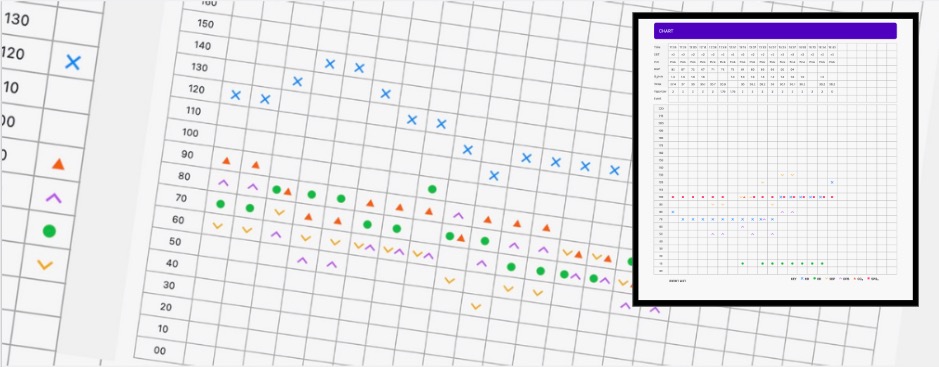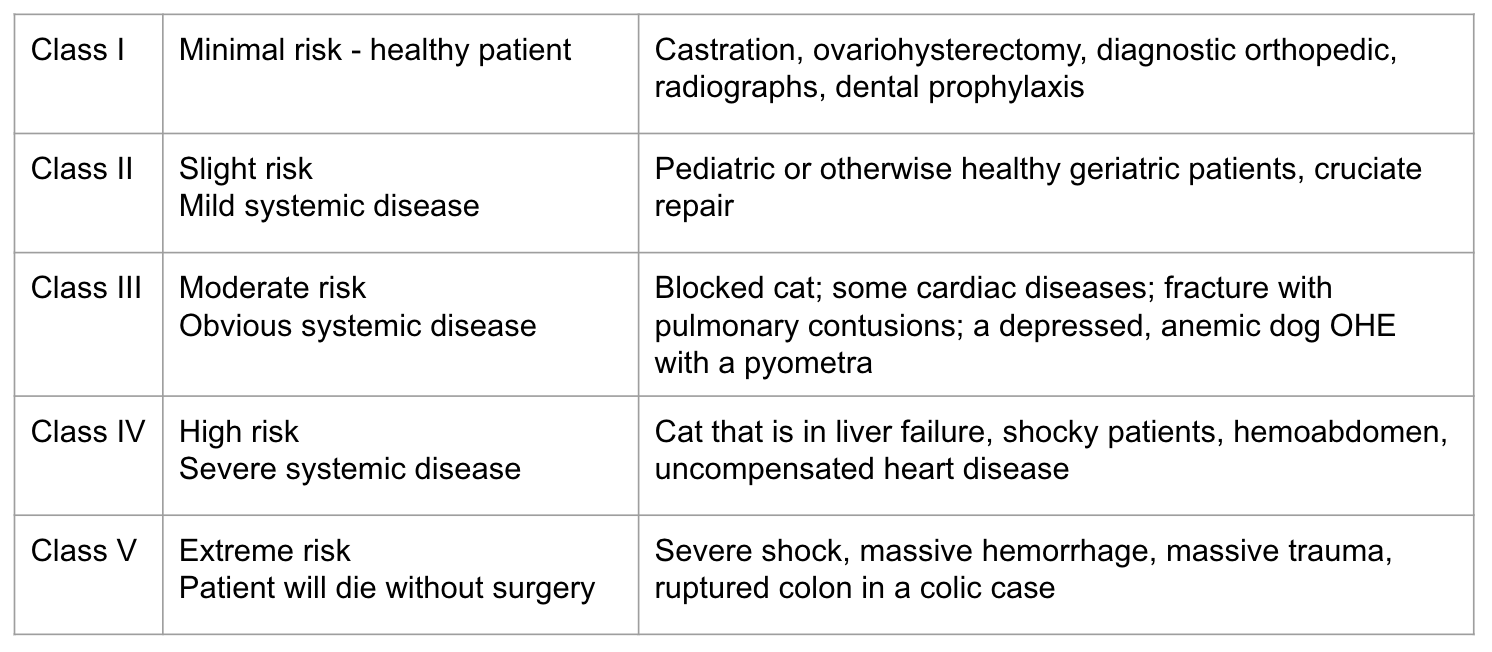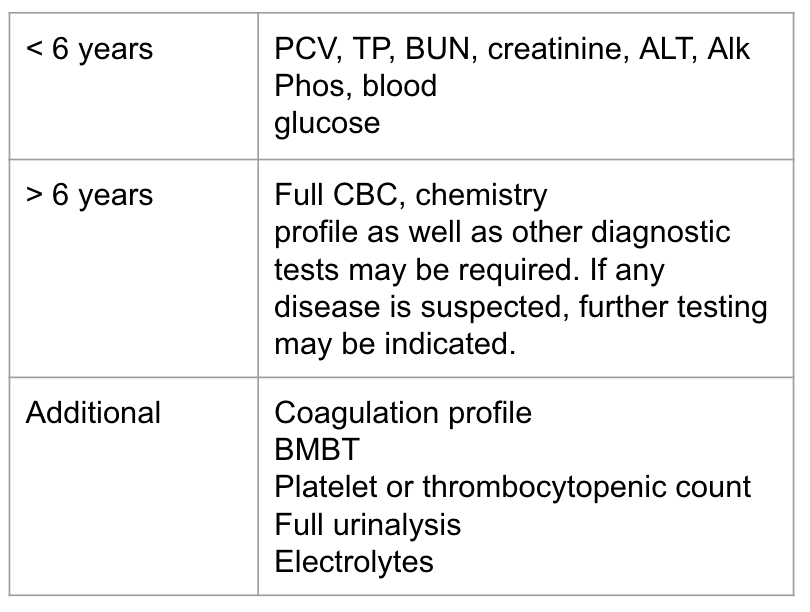
Gold standard general anesthesia monitoring
Important to note
Always monitor the patient, not the equipment
Check the patient BEFORE the equipment
Key Body Systems for Maintenance of Life
- Central nervous system CNS
- Cardiovascular system CVS
- Pulmonary system
- Oxygenation
- Temperature
Pre-GA Workup
Knowledge of the following is essential for successful GA management:
- Signalment i.e. age, breed, species
- Physical exam & observation
- Diagnostics
- ASA status or risk
- Choice of drugs
- Dosages
- Route of administration
The following systems are more important when it comes to the anaesthetists role:
- Cardiovascular system CVS
- Respiratory
- Renal
- Hepatic
ASA status
Source: American Society of Anesthesiologists

Pre-GA Diagnostics

Drug administration standards
Always check the following before administering any medications:
- Right Patient
- Right Agent
- Right Dose
- Right Route
- Right Time
- Right Technique
- Right Documentation
The GA record
Pre-anesthetic record must include:
- Equipment preparation
- Patient and client identification
- Date and procedure
- Preoperative physical evaluation and ASA status
- Previous and current medications
- Previous anesthetic episodes
- Laboratory results (BUN, PCV, TS, ALT, Glucose, and so forth)
- Drugs administered (dose, time, and route)
- Endotracheal tube size and anesthetic circuit used
During the anesthetic, your record must include:
- Parameters monitored (HR, RR, BP, temp)
Circulation - Stethoscope, pulse oximetry, ECG, BP
Oxygenation - Pulse ox or arterial blood gas (PaCO2)
Ventilation - Observation, stethoscope, capnography, PaCO2, respirometry - Significant events
- Supportive therapy and drugs (dobutamine, fluids)
- Endotracheal tube size and anesthetic circuit used
After the anesthetic, your record must include:
- Parameters monitored (HR, RR, BP, temp)
Unfortunately, 47-60% of all GA-related deaths occur during the post GA period and within the first 3 hours!
Reducing environmental stress such as bright lights, noise, cold rooms, bladder distension and pain can improve the recovery
Digital Surgical Safety Checklist
Most professional veterinary institutions will implement surgical safety checklists for every patient. For general practitioners, wanting to implement best practices. VetCheck offers a digital surgical safety checklist to hel set your patient up for a successful anesthetic.
- Pre induction e.g. correct site, ASA status
- Pre operative e.g. roles, swab count
- Post operative e.g. swab count, recovery plan, drug plan
VetCheck's Digital General Anaesthetic Monitoring Chart
A comprehensive, easy to use, digital GA monitoring chart that pushes straight back into the practice management system, VetCheck's chart is designed to help vet teams perfect GA monitoring.
To find out more, contact VetCheck on +61 3 7003 8878 or on support@vetcheck.it